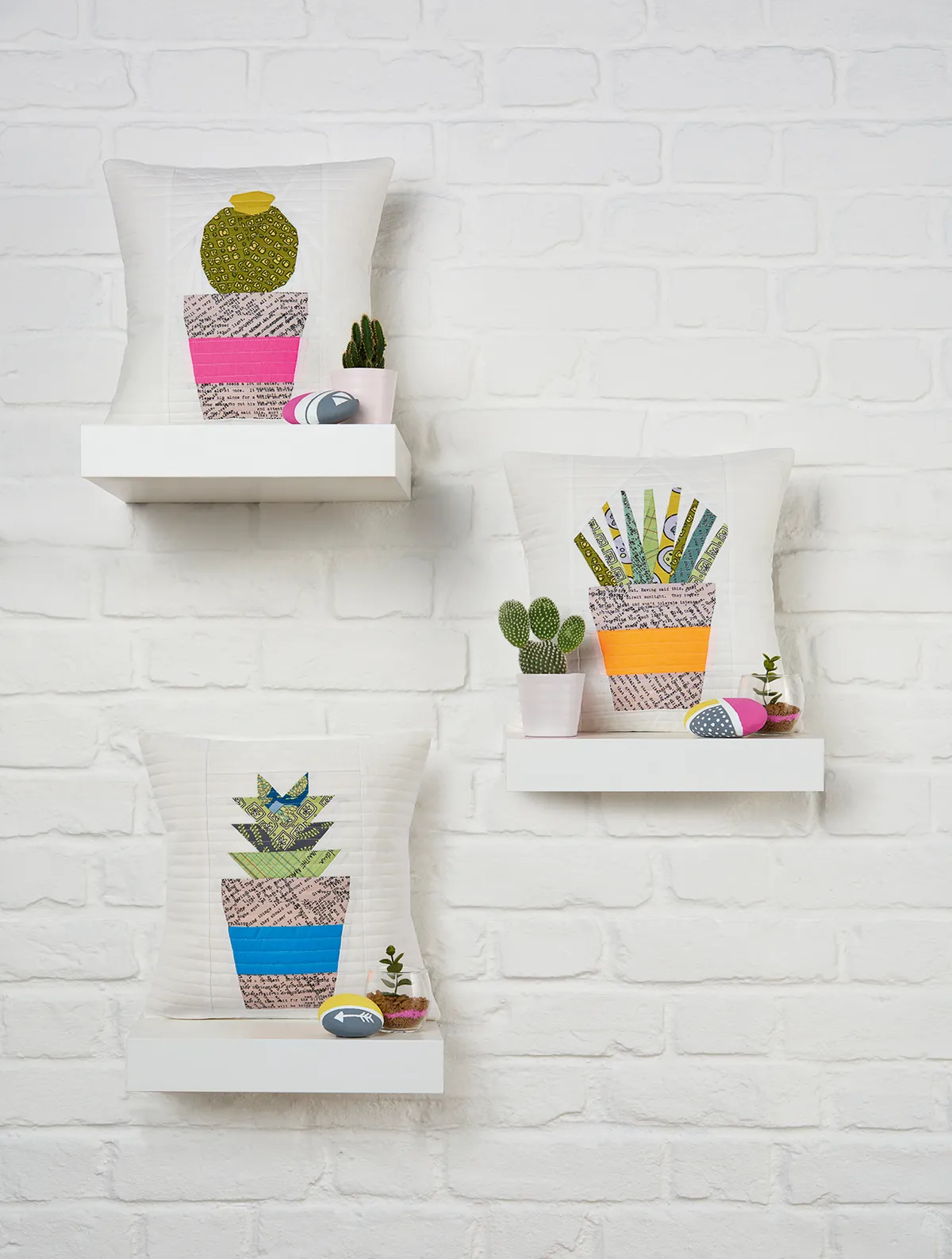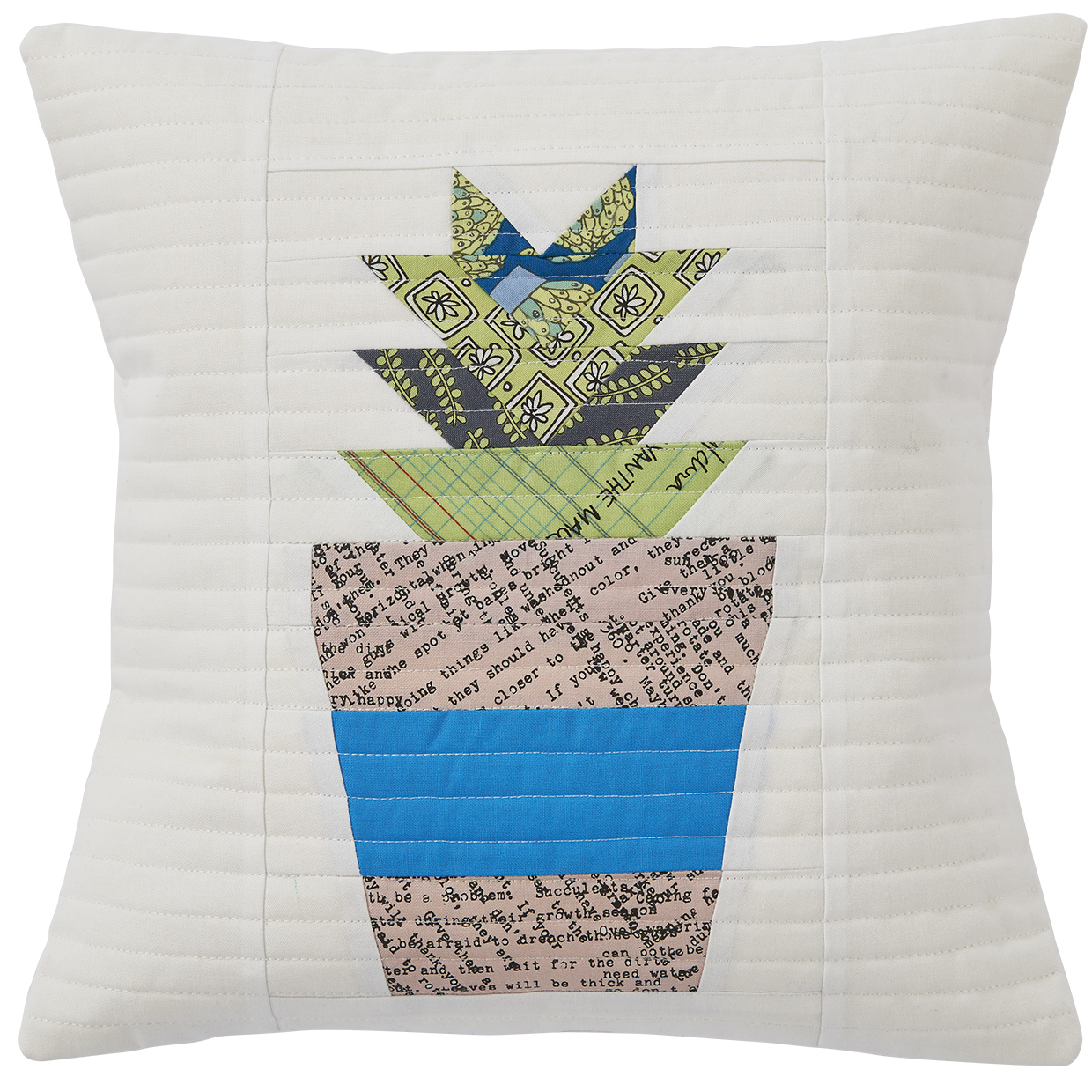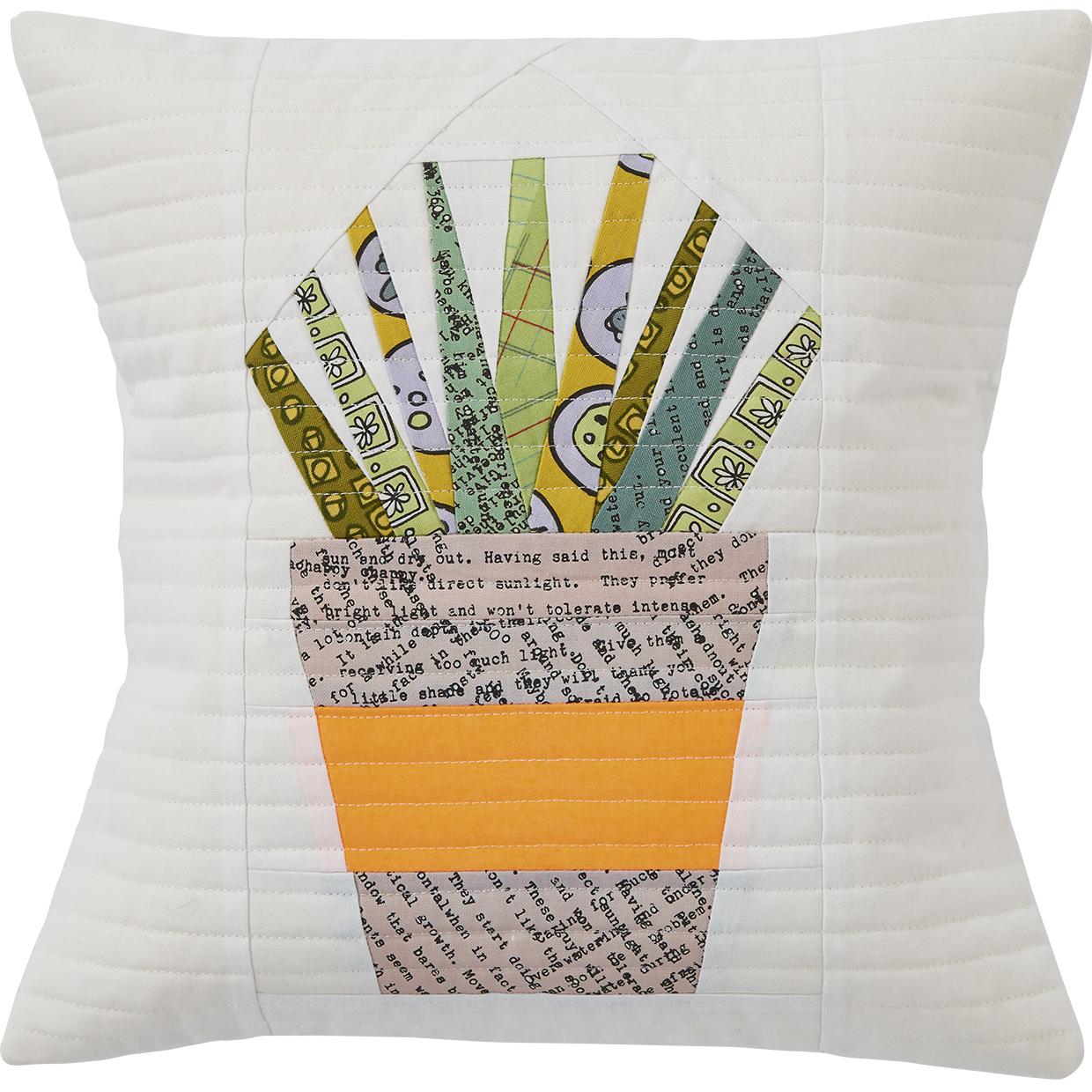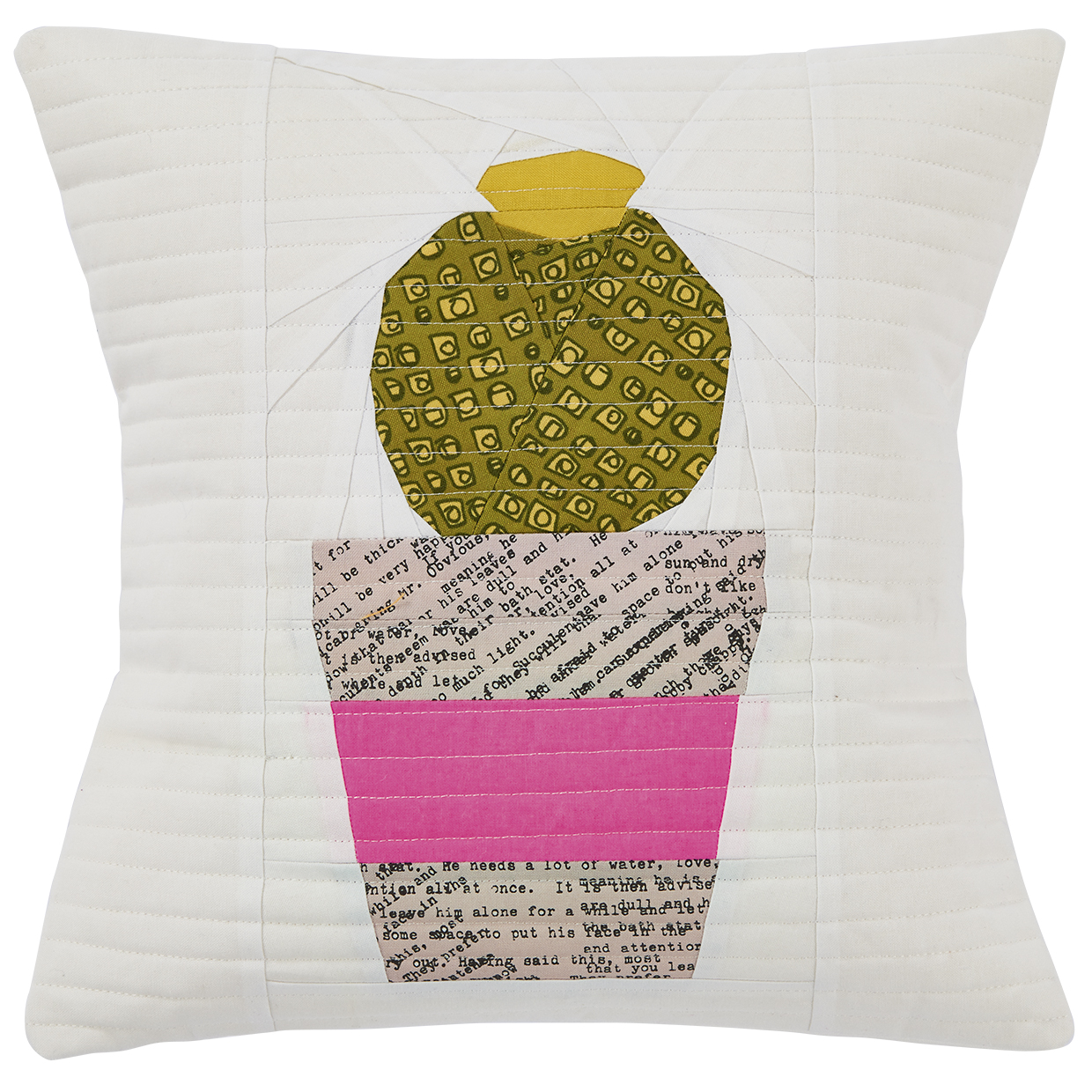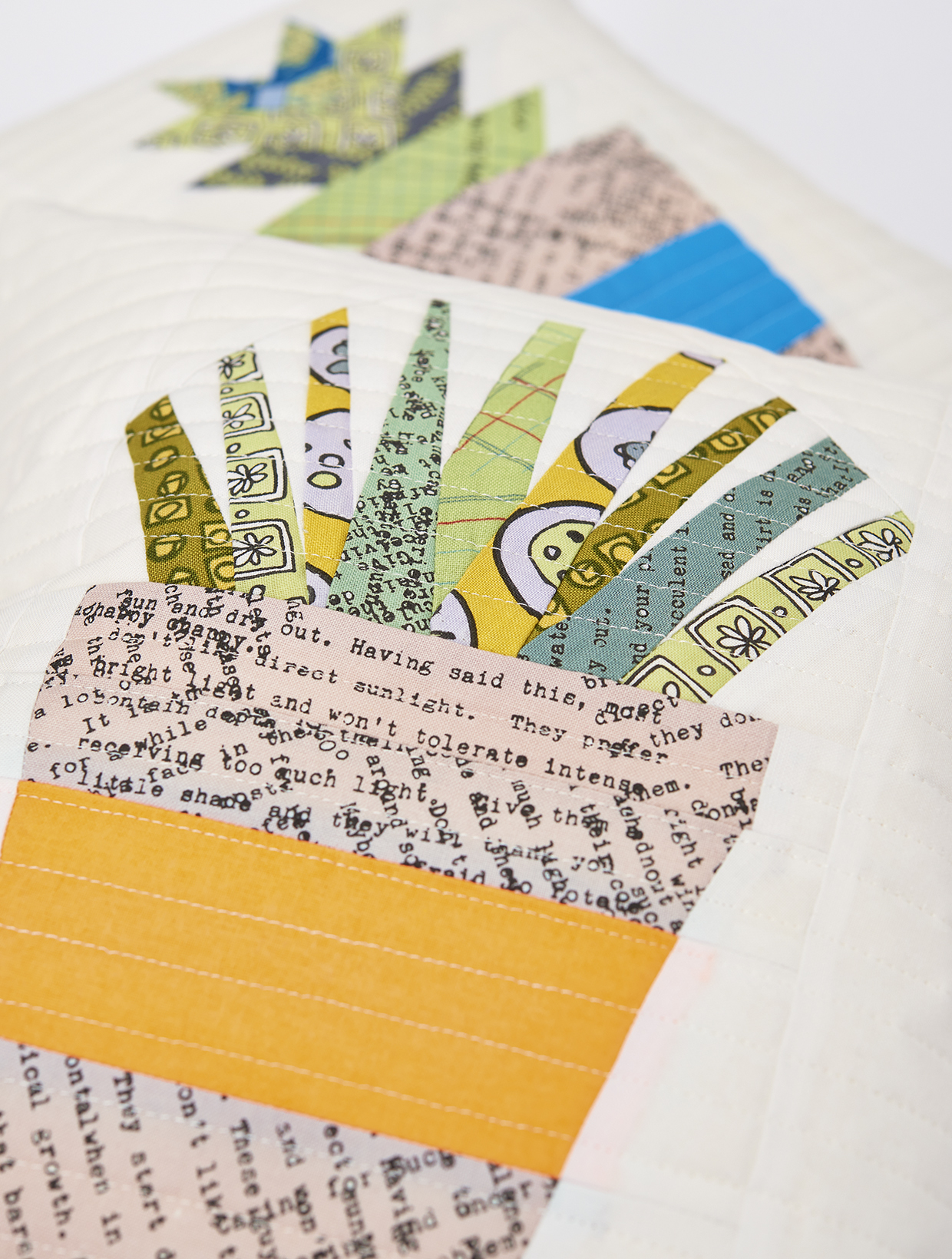If you haven't discovered paper piecing patchwork yet, we've got the perfect project to get you hooked! With this clever technique, you'll transform the smallest of fabric scraps into a beautiful set of fabric succulents with our trio of free cactus quilt patterns! We've got free templates to help you sew a Pearl, Aloe and Agave design in patchwork. We love the neon bands that designer Amanda has used to piece her pots, but you can also easily adapt the fabrics you use to adjust the final effect. Try using a pale blue background fabric instead of white for a more summery look
We'll show you how to turn your finished patchwork succulents into DIY cushion designs, but our free quilt block patterns would work just as well as blocks combined into a larger plant-inspired quilt. Once you've pieced together your plants, quilt them with horizontal quilt lines for a modern look that will also help to soften the pieced seam lines and give the designs a more realistic look.
Never tried foundation paper piecing before? This really clever technique involves sewing small pieces of fabric, back to front, along the lines of a paper template. We promise, it will make sense and you'll marvel at the results you can achieve! Have a read of our beginner's guide to foundation paper piecing and check out our tips below. Take your time and concentrate – the biggest challenge for us when foundation paper piecing if we try sleepy sewing!
Or if the wizardry of back-to-front foundation piecing feels like a big leap for you and you're still new to sewing patchwork with a paper base, why not try English Paper Piecing hexagons to grow your confidence? It's a different technique but it's very soothing!
This project was designed by Amanda Castor for Love Patchwork & Quilting magazine.
Our top tips for foundation paper piecing
- When cutting the fabric pieces, each piece should be cut larger than the area of the design it is to cover, with at least ¼in seam allowance all the way around. Before stitching, check that the fabric piece will cover the entire area of the design section by holding it up to a light source.
- You will find it easier to cut your fabric pieces as you sew each block unit, to avoid confusing small pieces.
- Remember that your pieces of fabric are always placed on the wrong (unprinted) side of the template, then you need to flip the whole thing over to stitch each seam line on the right (printed) side of the template.
- Shorten your stitch length when foundation piecing, to make it easier to tear away the paper foundation later.
- Make sure you sew exactly on the template lines to ensure that your units end up the correct size.
- When two pieces are stitched together, fold the paper foundation out of the way to trim the seam allowance down to ¼in.
Free cactus quilt patterns
You will need
Makes all three (3) cushions
- Text print for the pots, one (1) fat eighth
- Three (3) neon-coloured fabrics for the pots, 3in x 6in rectangle of each
- Various print scraps for piecing the plants, about ¼yd in total
- White fabric for block backgrounds and cushion backs, 1½yds
- Fabric for lining, three (3) 14in squares
- Wadding – three (3) 14in squares
- Three (3) cushion pads each 12in square
- Foundation paper or thin printer paper for templates
- Three (3) copies of Pot template
- One (1) copy of Pearl template (below)
- One (1) copy of Aloe template (below)
- One (1) copy of Agave template (below)
Free succulents paper piecing templates
Download our cactus quilt patterns for foundation paper piecing
Fabrics used
We've used prints from the succulents collection by Heather Givens for Windham Fabrics, and neon solids are by Riley Blake. The beauty of foundation paper piecing is these designs will also work well with small scraps of fabric from your stash.
Finished size
- 12in square approx
Notes
- Seam allowances are ¼in throughout, unless otherwise noted.
- RST = right sides together.
- Fat eighth = 9in x 21in.
